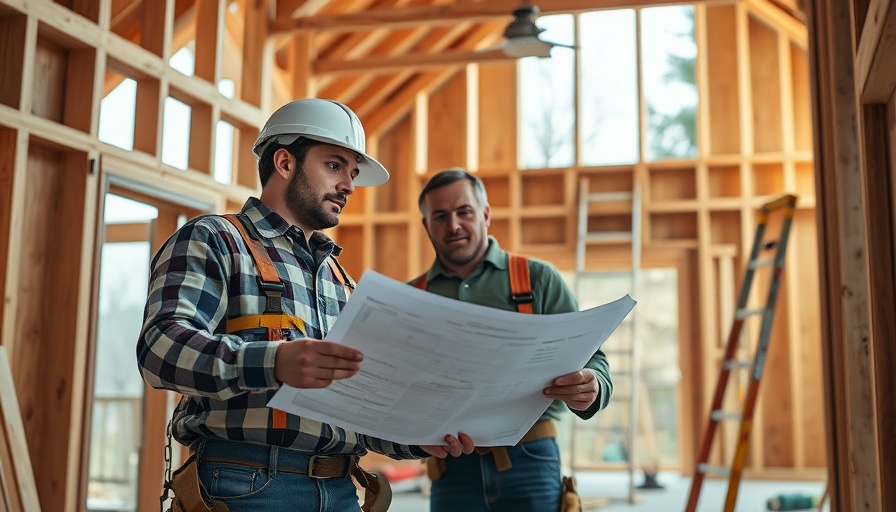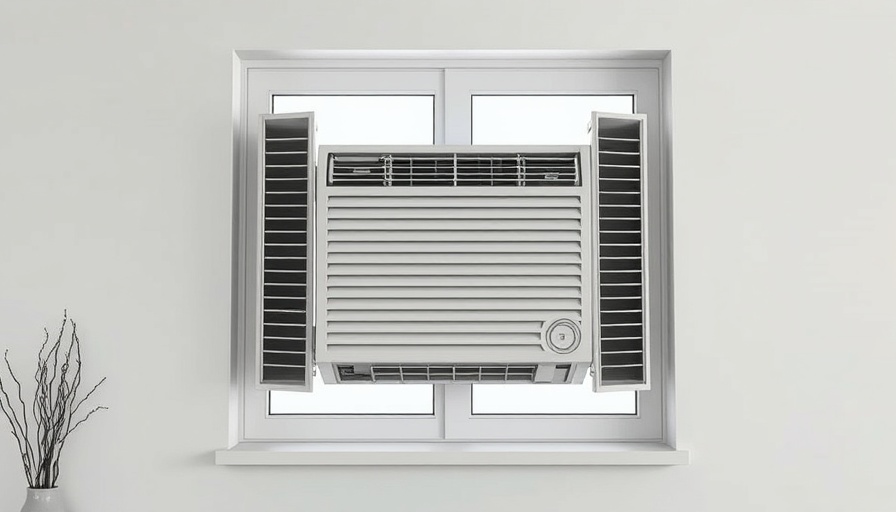
Understanding Economic Headwinds: The Current Landscape
In the face of persistent economic uncertainty, professionals in the home construction and design sectors are bracing for an uphill battle. The latest Q3 2025 U.S. Houzz Renovation Barometer reveals an alarming trend: a significant majority of firms anticipate negative impacts on their business due to a mix of international and local economic factors. Tariffs, inflation, and labor shortages are at the forefront of these concerns, particularly affecting professionals’ confidence in their industry's near-term health.
How Tariffs and Inflation Create a Challenging Climate
Among the concerns expressed, tariffs top the list—with 48% of construction firms and 59% of design professionals identifying them as a primary obstacle to success this quarter. This sentiment is echoed throughout the industry, where rising material costs due to tariffs on essential resources like lumber and steel have resulted in heightened caution among home professionals.
As professionals navigate this tricky landscape, the impact of tariffs—specifically on critical materials such as plywood and steel—is expected to reverberate throughout projects, directly affecting timelines and budgets. This reality has led many firms to revise their business forecasts downward, fostering a climate of apprehension.
How Home Professionals React to Shifting Markets
Despite the gloomy predictions, there is a silver lining; more construction and design professionals remain positive about potential business improvements compared to those predicting declines. For example, while 93% in residential construction and 94% in design foresee negative impacts in Q3, a larger portion is still hopeful about overall performance compared to previous quarters.
This cautious optimism suggests that many professionals are not only resilient but also adaptable. They recognize that flexibility and innovation are key to weathering economic storms. As they seek to revamp operational systems and manage tighter budgets, these professionals are employing novel approaches to attract and retain clients, including enhanced digital marketing strategies and AI technologies.
The Role of AI and Technology in Modern Home Design
As the construction industry continues to evolve, technology plays an increasingly vital role. AI adoption is accelerating among professionals, propelling efficiency in design and project management. Integrations such as virtual interior design and smart home technology allow firms to offer tailored solutions that appeal to modern client needs while maximizing resource allocation.
These technological advancements not only streamline operations but also create greater value for consumers, delivering unique experiences that can differentiate businesses in a saturated market. Therefore, understanding and embracing these innovations will be pivotal for professionals looking to gain a competitive edge amid economic challenges.
Emotional Impact and Community Sentiment
The emotional toll of economic uncertainty cannot be overlooked. Professionals in the home sector often report increased stress due to financial pressures and the fear of long-term job security. Community sentiment reflects a blend of anxiety and determination. Many professionals are rallying together to share ideas, support one another, and explore collaborative opportunities that extend beyond traditional company boundaries.
This sense of belonging is crucial as firms endeavor to maintain a positive workplace culture even in challenging times. Building community connections not only aids in personal well-being but also inspires collective resilience, a vital trait for overcoming contemporaneous economic hurdles.
Looking Ahead: Strategies for Resilience
As the landscape of construction and design continues to shift, home professionals must develop robust strategies to navigate these economic waters. It involves creating adaptive business models, investing in technology and innovation, and fostering a culture of support and resilience among peers.
The emerging trends in eco-friendly practices and energy-efficient solutions present exciting opportunities for professionals willing to pivot. By aligning with consumer values and prioritizing sustainability, firms can harness market advantages while contributing positively to their communities.
Conclusion: Take Action Amid Economic Uncertainty
In conclusion, while economic challenges loom large over the home construction and design industries, professionals are uniquely positioned to adapt and thrive. By embracing innovation, prioritizing collaboration, and remaining resilient, they stand a chance to not only survive but flourish. For those affected in California and beyond, now is the time to leverage insights and strategies discussed in this report. Engage, learn, and act—your future could depend on it.
 Add Row
Add Row  Add
Add 




Write A Comment